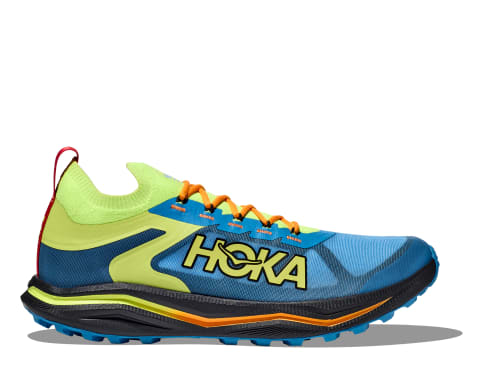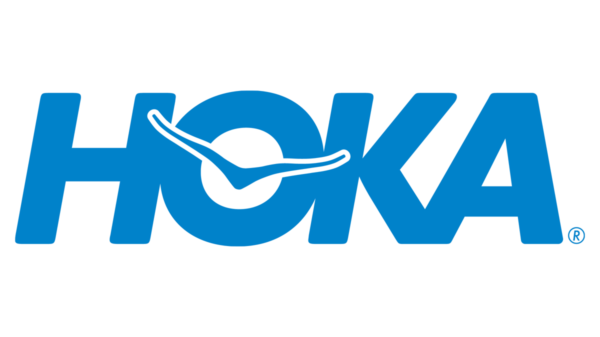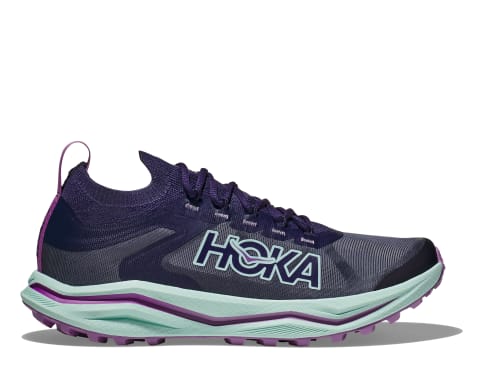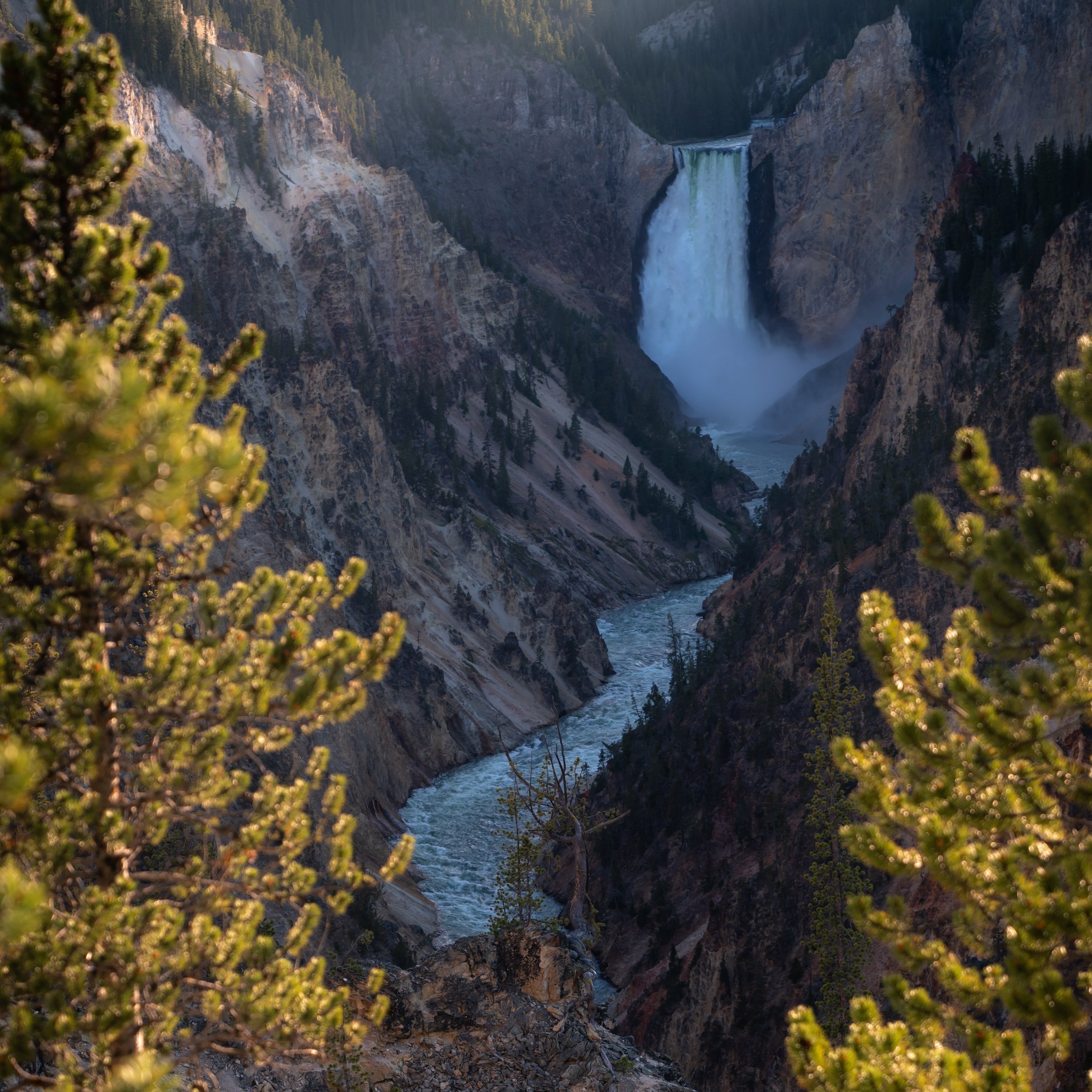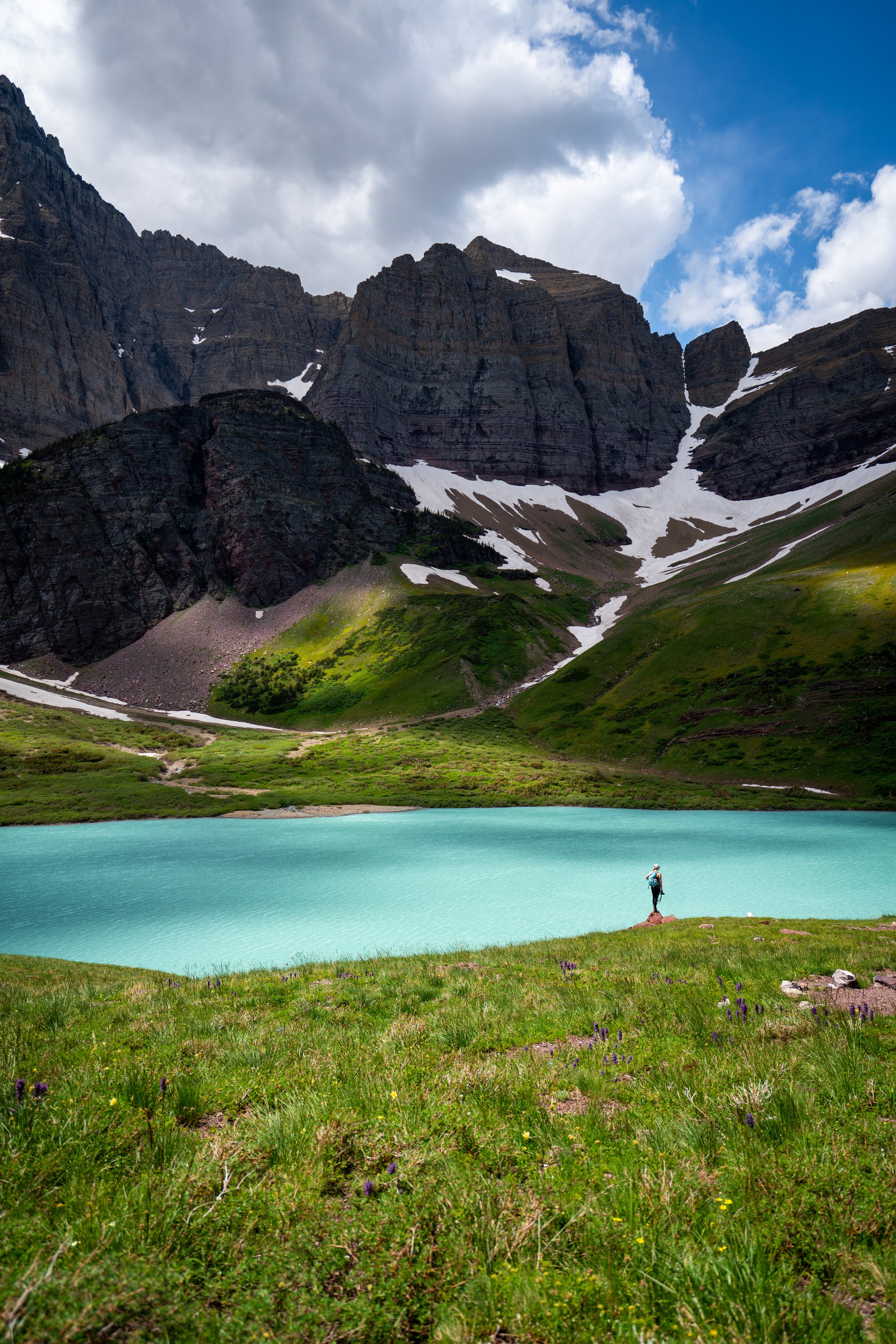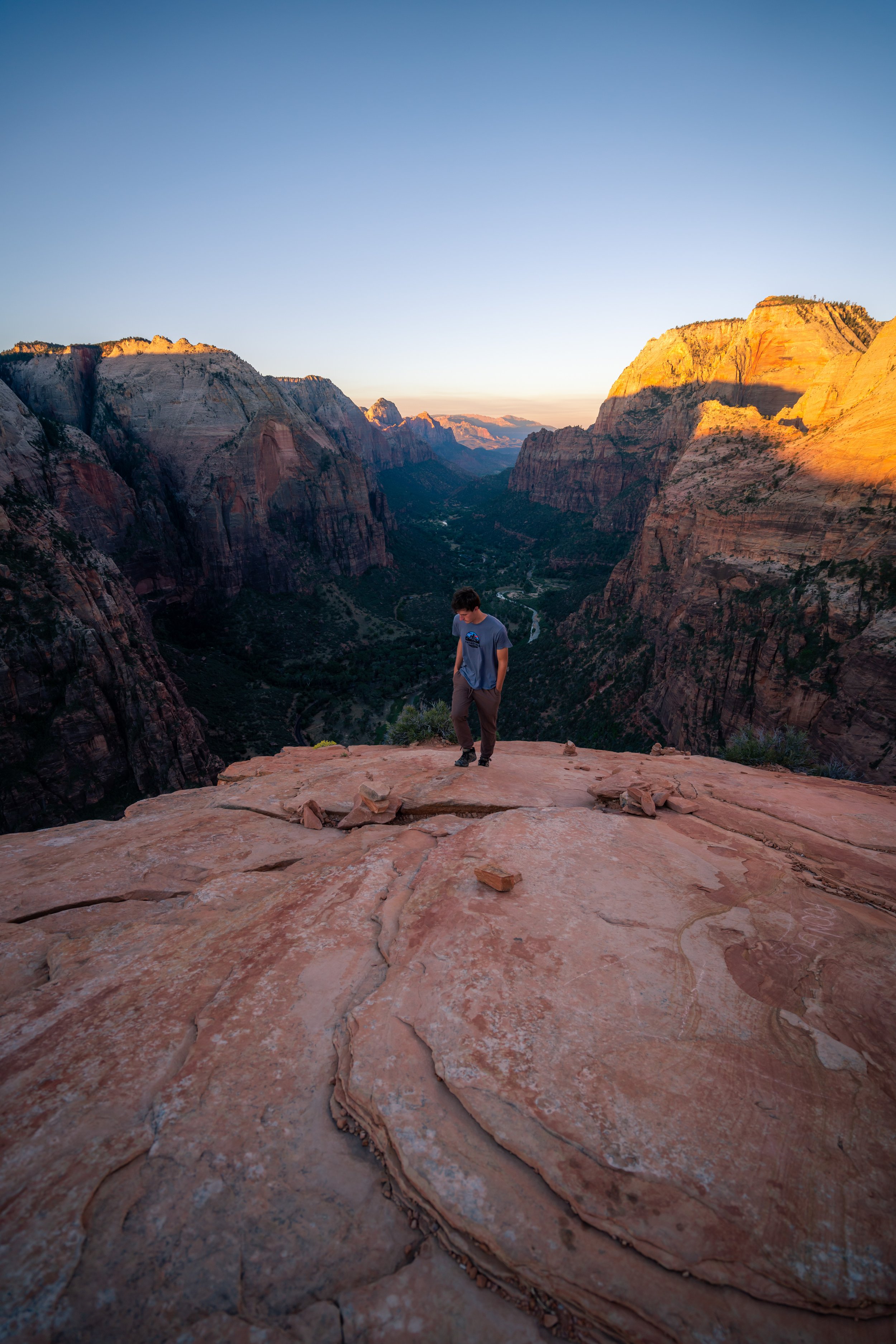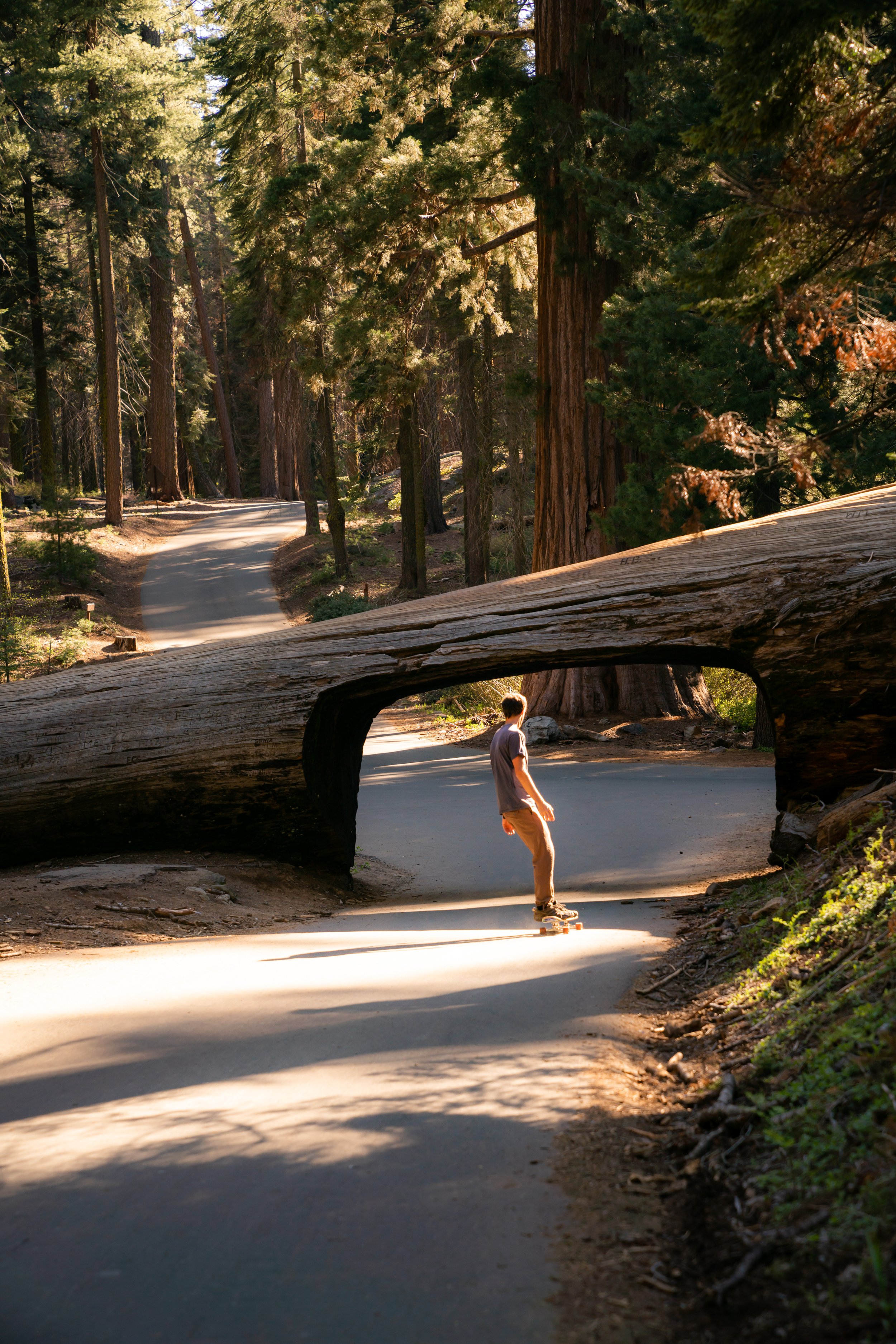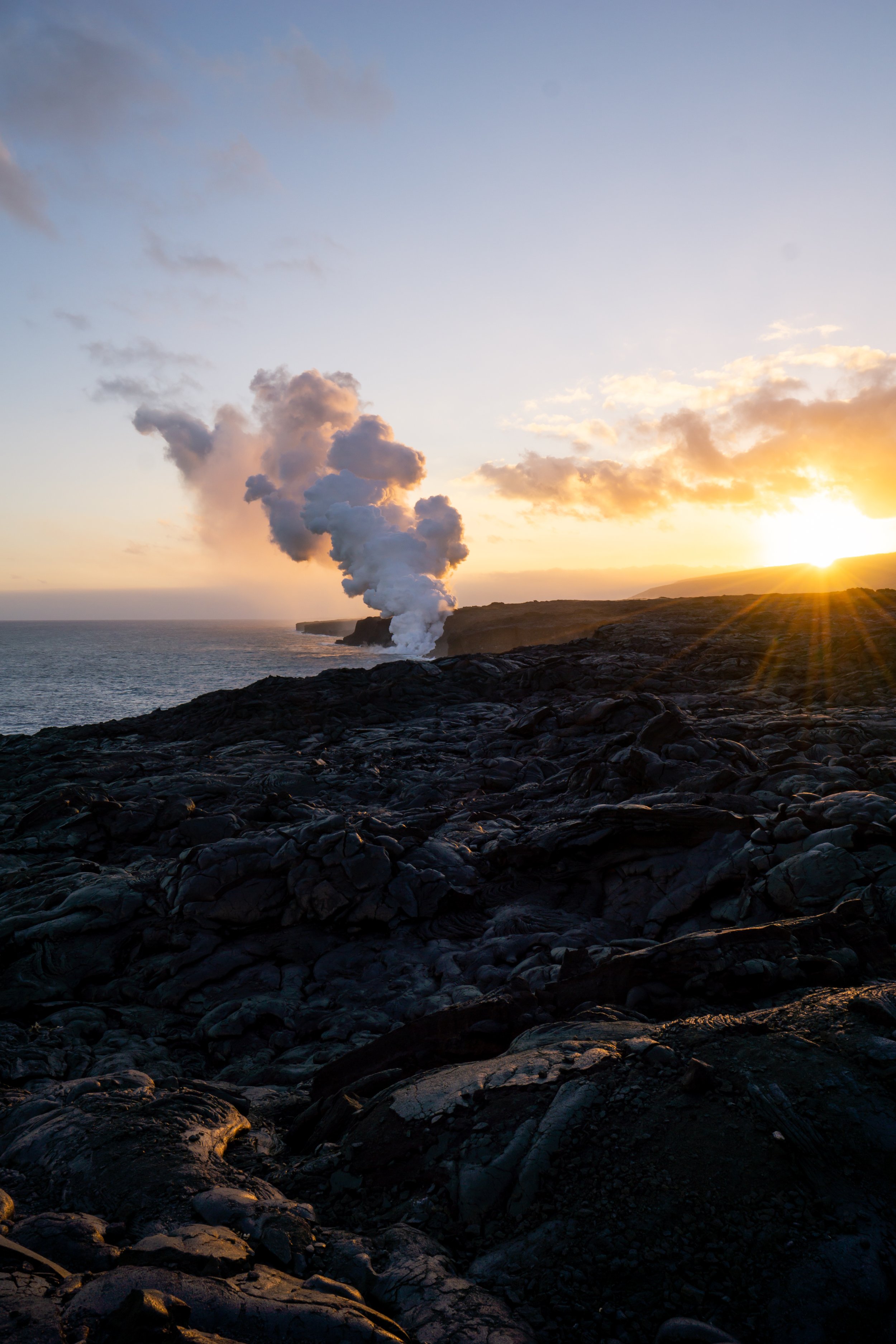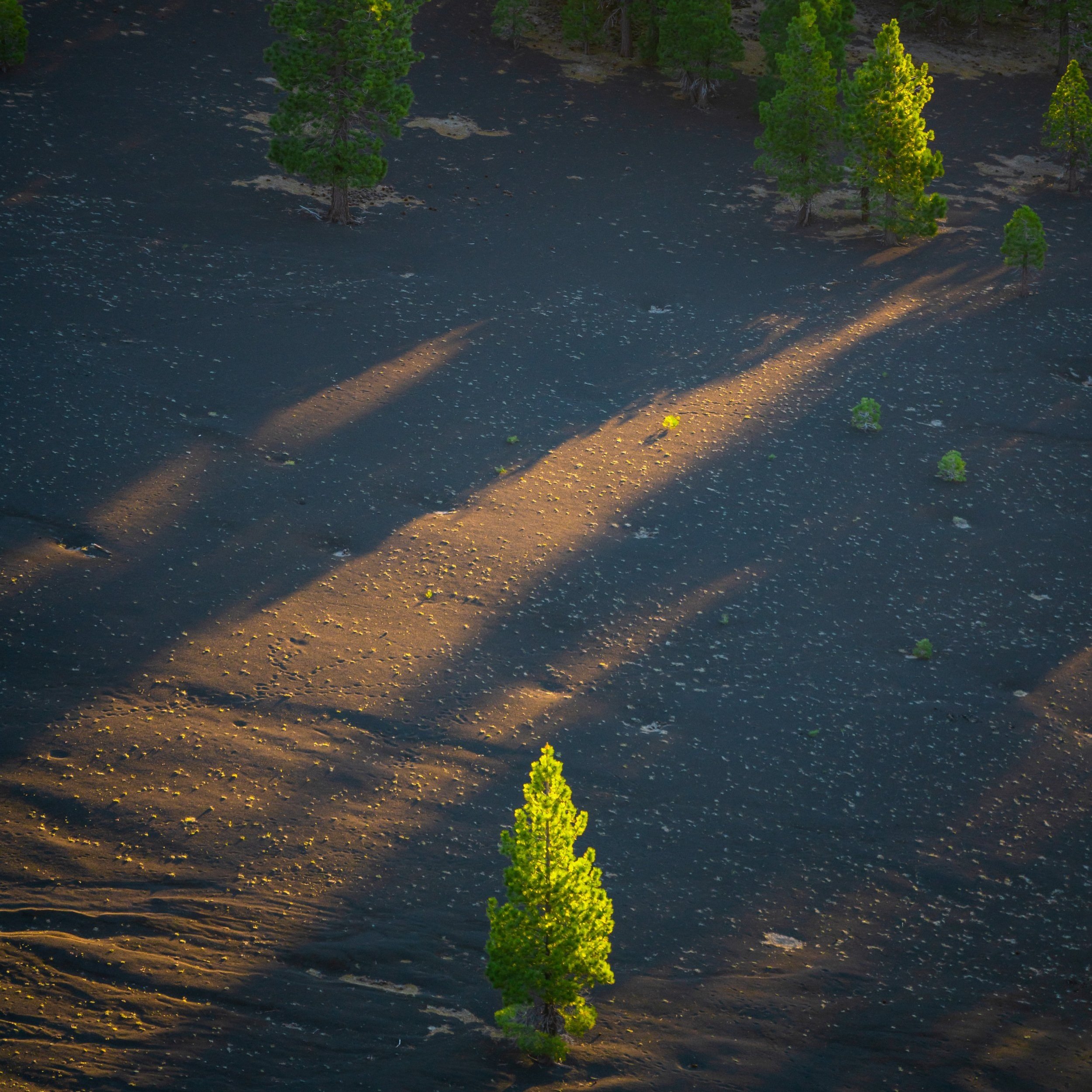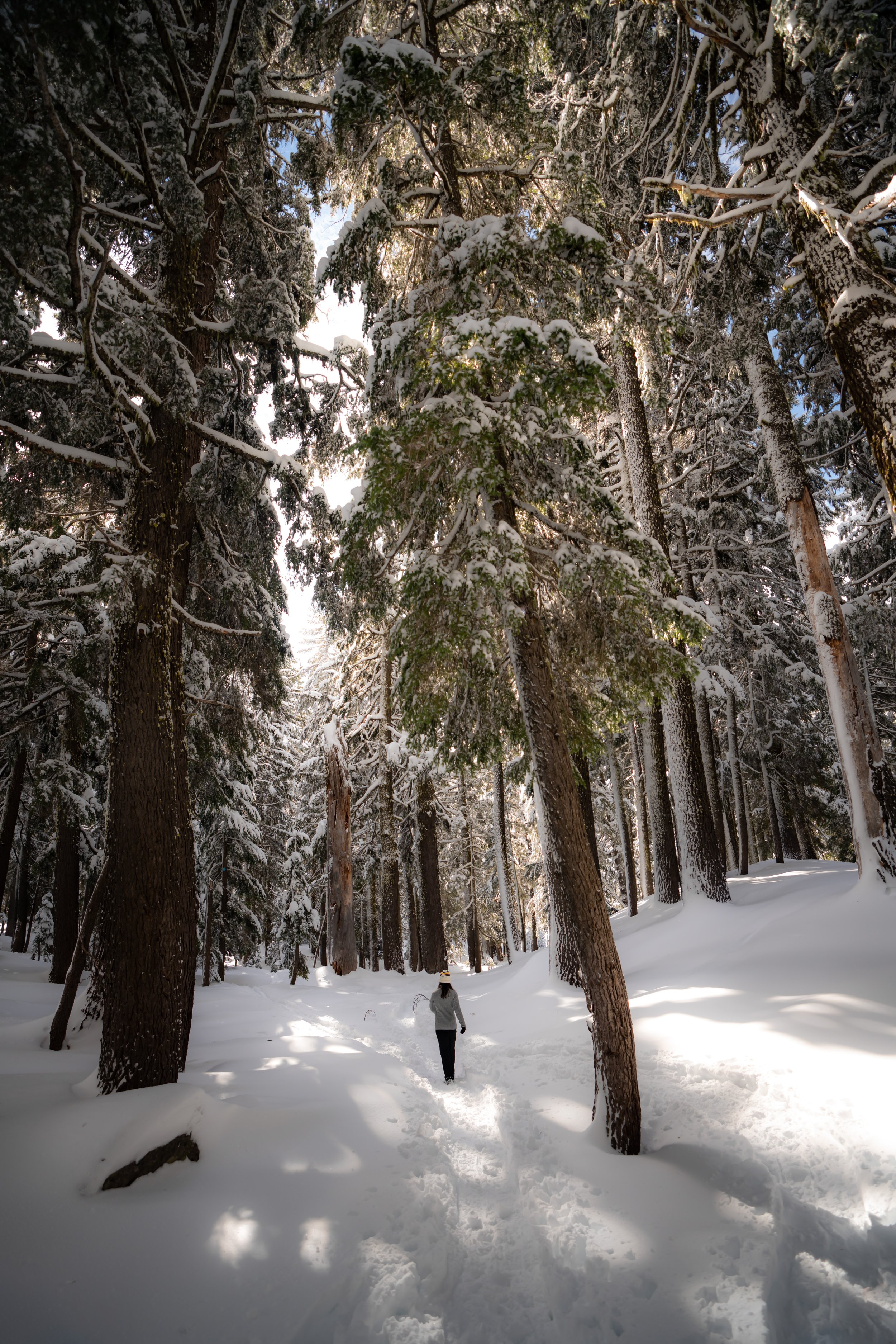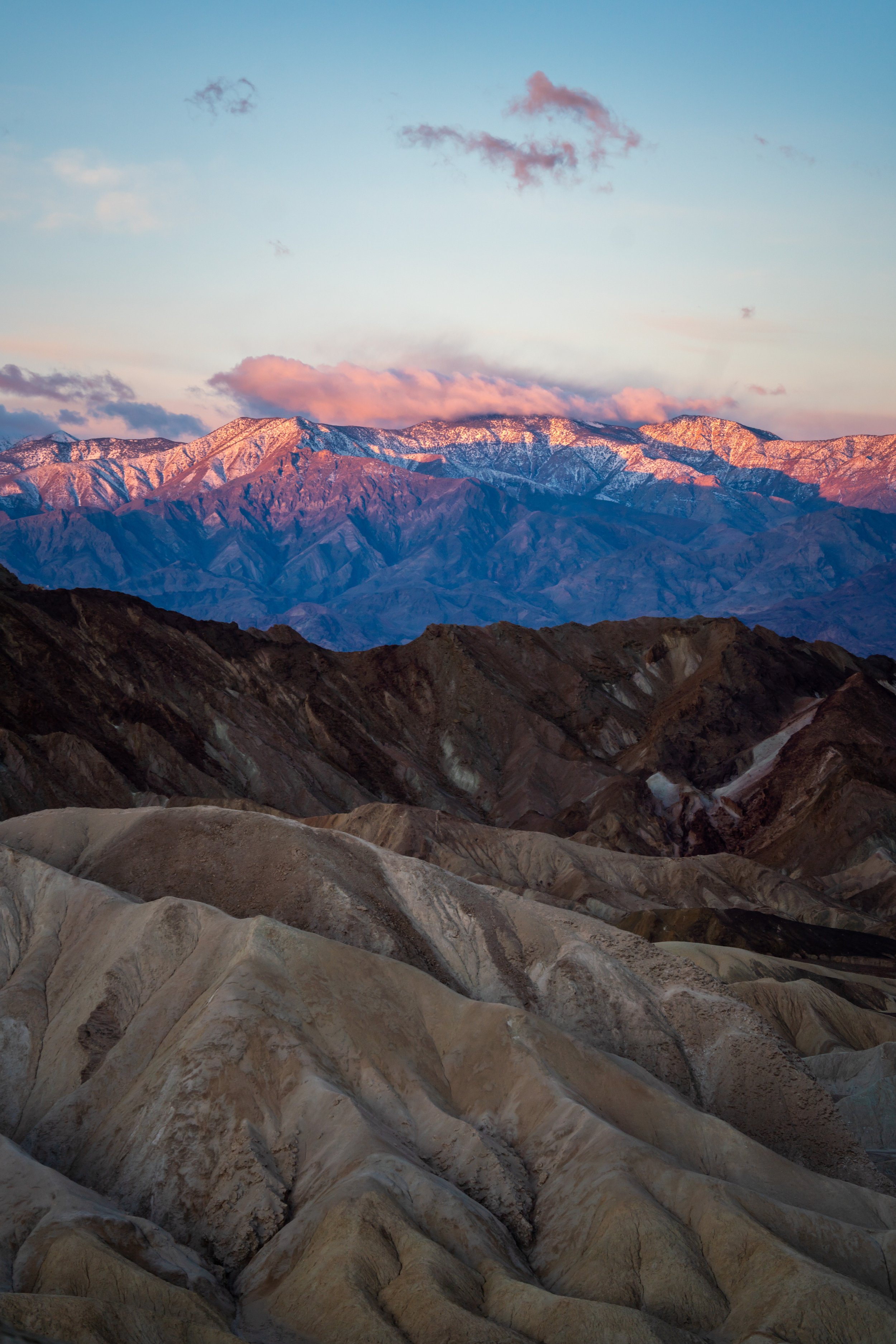Hiking the Precipice Trail to Champlain Mountain in Acadia National Park
Distance (Precipice-North Ridge Loop): 2.0 miles / 3.2 km
The Precipice Trail to Champlain Mountain is often regarded as the most challenging day hike in Acadia National Park, due in large part to the scrambling, open cliff faces, and vertical climbing required to reach the summit.
By this, I mean that the Precipice Trail follows a series of narrow ledges, iron rungs, railings, bridges, and ladders up a steep granite cliff—similar only to the Beehive Trail just down the road.
However, unlike the Beehive Trail, the exposure on the Precipice Trail is far more pronounced, as there are many areas where the trail traverses a narrow ledge adjacent to cliffs where falling is simply not an option. Yes, hikers have taken fatal falls on the Precipice Trail in the past.
That being said, visitors interested in hiking the Precipice Trail need to be comfortable with scrambling, meandering through two narrow caves, and making a number of awkward moves—one in particular where the exposure and risk of falling is extremely significant.
This is all to say that the Precipice Trail is not suitable for people, of all abilities, but for those who are up for the challenge, it is without a doubt one of the most beautiful adventures in Acadia National Park—especially if you hike the trail for sunrise!
Beehive vs. Precipice Trail
The Beehive and Precipice Trail are like sister hikes that share the nickname 'Maine’s via ferrata,' as they are both comparable to one another because of how they ascend Acadia’s steep granite cliffs through a series of iron rungs, railings, bridges, and ladders.
That being said, the Precipice Trail is notably more difficult than the Beehive Trail, due largely to a number of narrow, highly exposed ledges. This is not to say that a fall on the Beehive Trail would be better in any way, but the exposure on the Precipice Trail is just that much more apparent and prolonged.
With that in mind, climbing vertical, exposed ladders along with walking along narrow ledges—where a fall would likely be fatal—are things you must be comfortable with before considering either. Neither the Beehive nor Precipice Trail should be the place where you first discover your comfort and ability with climbing and exposure, as both trails are very popular, meaning it can be very inconsiderate to be the one creating a backlog of other hikers when there is hardly any room to pass on the narrow ledges.
All this is to say that the risks associated with falling on both the Beehive and Precipice Trail are very high, and whether one is considered 'easier' than the other, neither is suitable for all people, of all abilities. There’s simply no nice way to say it.
Read My Separate Post: Beehive Trail
When is the Precipice Trail Open?
Seasonal Closure: Spring - Mid-August (~March 1 - August 15)
Unlike most trails in Acadia National Park, the Precipice Trail is closed for much of the year due to two main reasons. The first has to with the Peregrine Falcons.
Peregrine Falcons are the predators famously known for their remarkable and unmistakable hunting ability, as they seemingly fall out of the sky at record speeds to attack their prey. While the Precipice Trail closure does not relate to this unique adaptation, the cliffs along Champlain Mountain are home to the species for part of the year. It is here that the birds engage in courtship behaviors and raise their chicks along the cliffs of Champlain Mountain where the Precipice Trail ascends.
The second reason the Precipice Trail closes is a bit more indirect. By this, I mean that Acadia’s entire trail network remains open throughout the winter, but in the words of the National Park Service, 'large portions of the Park Loop Road close to vehicle access, [which] can add additional complexity and mileage to any hikes accessible from Park Loop Road, including Precipice.'
Precipice Trailhead Parking
Parking for the Precipice Trail is located just off Park Loop Road, about 1.1 miles (1.8 km) south of the Cadillac North Ridge Trail.
Remember to purchase your National Park pass in advance and display your pass or entrance receipt here and at every trailhead in Acadia National Park, whether you went through an official entrance station or not. Yes, law enforcement officers check parked cars throughout Acadia, and I have seen tickets handed out to vehicles not following the rules of a U.S. fee area.
On a different note, be aware that Acadia National Park is one of the busiest parks in the country, and finding a place to park, even at less-known trailheads, can be incredibly challenging during the busiest times of the year.
Google Maps Directions: Precipice Trailhead
Hiking Checklist - Acadia
Here is a complete list of must-have things that you will want for any hike in Acadia National Park.
Osprey 3L Water Bladder - The Osprey 3L water bladder is the most universal hiking and backpacking water bladder on the market, and it’s my go-to because of the slide-off seal that allows it to be quickly filled from the top. Additionally, individual parts are easily replaceable, such as the bite valve.
Blister / Heel Protectors - I swear by these cheap, amazing heel protectors to prevent blisters for nearly every kind of hiking and backpacking that I do!
Black Diamond Headlamp - Personally, I recommend the Black Diamond Storm because it is one of the brightest, lightest, and longest-lasting headlamps on the market—and trust me, the weight-to-battery-life ratio really does matter!
Hiking / Trail Running Shoes - Depending on the type of trail, I prefer to use either the Keen Targhee for longer, more rugged hiking or the HOKA Zinal Trail-Running Shoe for lighter, less intense trails. In either case, both have been amazing to me for many years across countless environments, and both can be found in men’s and women’s sizes. - (Men’s Keen / Women’s Keen) (Men’s HOKA / Women’s HOKA)
Waterproof Rain Shell - You never know when it may rain, and I’ve learned over the years that a rain shell is far better than a rain jacket. By this, I mean that it’s best to have something that the water will roll right off of, which is why I recommend the Patagonia Torrentshell 3L available in both men’s and women’s sizes.
High SPF Sunscreen - Packing high-SPF sunscreen is a must for long days outside!
Hiking the Precipice Trail
From the moment the Precipice Trail begins, it starts climbing, gaining roughly 1,000 ft. (305 m) in just 0.7 miles (1.1 km) from the trailhead to the summit of Champlain Mountain.
Just like the Beehive Trail, the National Park Service posts the same warning to hikers about the risks involved.
This initial cliff is the first set of iron rungs on the Precipice Trail, and I highlight this to say that if you or anyone in your party has any difficulty here, turn back.
The Precipice Trail only becomes more challenging the higher it climbs, and after a certain point, turning around will be more difficult than proceeding forward.
After just 0.2 miles (0.3 km), the Precipice Trail reaches the base of this Class 2 scramble.
That said, this section does not climb all the way to the top of the boulder field; rather, look out for the sharp right turn about halfway up.
This is the hard right turn that hikers often overshoot, especially those hiking in the dark for sunrise.
Precipice Caves
Shortly after the scramble, the Precipice Trail squeezes through two back-to-back caves.
With that in mind, there is the option to climb over both, but I’d be splitting hairs if I tried to say what route is easier.
Following the caves, the Precipice Trail follows a long, narrow ledge through the trees to reach the start of the Precipice Loop.
If you decide to hike the Precipice Trail for sunrise, I highly suggest getting an earlier start than you might think, as sunrise on the trail is best from the uppermost cliffs of Champlain Mountain, which will take some time to reach—much more time than is required to get to a good viewpoint on the nearby Beehive Trail.
If you happen to be visiting Acadia National Park during the colder times of the year, I recommend traveling to the park with micro-spikes, as they can be essential here and on countless other trails throughout Acadia.
Precipice-Orange & Black Junction (Precipice Loop Trail)
At roughly 0.4 miles (0.6 km), the Precipice Trail reaches its only junction before the summit of Champlain Mountain.
This is the Orange-and-Black Path, which can be used to create the Precipice Loop Trail to avoid descending the steepest and most dangerous sections up ahead.
That said, it’s much more common—and more practical—to skip this section of the Orange-and-Black Path altogether and proceed down the trail to Park Loop Road.
This is the most popular option, and it’s the one I recommend, as shown at the end of this article.
After the Orange-and-Black junction, the Precipice Trail continues up a fairly steep and narrow ledge to the first set of iron-rung ladders.
'Point of No Return'
This is the unofficial 'Point of No Return,' where down climbing the Precipice Trail becomes significantly more difficult with each step higher.
It is for these reasons that I previously mentioned that the Precipice Trail becomes increasingly difficult the higher you climb, which translates to more and more exposure, with one of the most challenging sections just below the final cliff at the top.
This also doesn’t account for the fact that turning back here can be inconsiderate to other visitors, due to how challenging it can be to pass other hikers on the sections to come. However, since the Precipice Trail is longer and considered to be more dangerous than the Beehive Trail, there are usually fewer hikers in comparison.
Again, these narrow, exposed, and slanted ledges can be particularly dangerous in cold, icy conditions, which is why I highly recommend carrying micro-spikes if you suspect this to be the case.
From this narrow ledge, at about 0.6 miles (1.0 km) and beyond, the views on the Precipice Trail significantly open up compared to the beginning.
Areas like this and higher are where I recommend catching the sunrise. However, if this is your goal, don’t underestimate how long it will take to hike 0.6 miles (1.0 km) on the Precipice Trail.
On this windy day, a storm from seemingly out of nowhere began approaching Champlain Mountain, which eventually made some of the narrowest sections even more dangerous when they became wet.
The rest of these photos to the summit of Champlain Mountain are from a different time I hiked the Precipice Trail because of the storm that engulfed the mountain.
That being said, all of these photos still follow the Precipice Trail in the same order.
Some of these ledges and cliffs near the top are a few of my favorite places to catch the sunrise on the Precipice Trail!
Perhaps wear better shoes than I did this morning, but to be fair, this wasn’t my first time hiking the Precipice Trail.
I only say this because my outdoor experience around the world has made hikes like the Precipice Trail seem fairly easy, but I don’t want to encourage complacency.
Those without as much experience on this type of terrain and exposure will absolutely have a different experience than my own, which is why I recommend considering my favorite pair of trail runners, linked below, as they can be a great choice for this and countless other adventures across Acadia National Park!
This short stretch may be the most dangerous set of iron rungs on the entire Precipice Trail because of how sloped and exposed the ledge is to the adjacent cliff!
Seriously, take it slow!
At the end of the sloped ledge, this last section to round the corner might be the most awkward and dangerous move of the entire Precipice Trail!
I personally consider this to be the 'crux' of the route, but the entire ledge is an area that some hikers may find to be particularly challenging.
Immediately after the narrow ledge, the Precipice Trail begins to level out, with only one more, much easier cliff to scramble up to reach the summit of Champlain Mountain.
This is why I truly believe the hardest part of the Precipice Trail is at the very end!
As the Precipice Trail nears the summit, it simply follows the blue markers through the Red Pine forest to the final cliff.
This 25-ft (7.6 m) cliff face is the final section with iron rungs before the summit of Champlain Mountain, and it is one of the easier climbs to navigate compared to everything prior.
This sign, just before the top, serves the same warning as the sign located just after the Precipice Trailhead.
Champlain Mountain
According to the National Park Service, the summit of Champlain Mountain stands at 1,053 ft. (321 m) according to the official map, not this summit marker.
That said, Champlain Mountain is also the junction of four different routes that climb the peak from all directions, with the most popular being the Champlain North Ridge Trail, because it’s the route utilized to create what’s known as the Precipice Loop Trail.
Champlain North Ridge Trail
From the summit of Champlain Mountain, the Precipice Loop Trail continues on the Champlain North Ridge Trail, descending the northern granite slopes of the mountain for about 0.6 miles (1.0 km) until it branches off onto the Orange-and-Black Path below.
These views to the north look down toward the Jackson Laboratory, with Bar Harbor and Bar Island visible in the distance.
Once again, I want to stress the importance of carrying micro-spikes and possibly even poles during the colder months in Acadia National Park.
I say this because granite slopes, just like this, can be particularly dangerous and unexpectedly slippery at this time of year, and while the Precipice Trail may close due to hazardous conditions, the Champlain North Ridge Trail and others throughout the park will remain open, making it of the utmost importance to hike prepared.
At this granite clearing, where Beaver Dam Pond down below becomes fully visible, go right to find where the Precipice Loop Trail splits away from the North Ridge Trail on the Orange-and-Black Path Connector.
Champlain North Ridge-Orange & Black Connector Junction
This trail to the right connects both the Champlain North Ridge Trail and the Orange-and-Black Path, about 0.1 miles (0.2 km) away.
That being said, go right to leave the North Ridge Trail and continue down to Park Loop Road.
Orange & Black Connector-Orange & Black Junction
This is where the Precipice Loop Trail meets the true Orange-and-Black Path.
This is also where you need to decide if you would prefer to hike back to the Precipice Trail to the right or down to Park Loop Road to the left.
I personally prefer to go left, which is the direction shown in this article, but that requires hiking back at least 0.6 miles (1.0 km) on the busy Park Loop Road, or even further if you prefer to stick to the trails.
Alternatively, the Precipice Trail would end at the original trailhead, but remember that requires navigating back through the caves, down a few of the initial iron-rung ladders, and the boulder scramble—all of which will have more hikers to pass if you began first thing in the morning.
Everything above is to say that I chose to go left down the Orange-and-Black Path.
Park Loop Road (Orange & Black Trailhead)
Once the Orange-and-Black Path reaches Park Loop Road, the decision really becomes whether to continue across on the Orange-and-Black Path to create a loop with the Schooner Head Path, or go right to walk the road back to the Precipice Trailhead.
I personally prefer to walk the road, but that doesn’t go without saying that vehicles often drive very fast along this stretch, next to hikers who only have a narrow shoulder to stay clear of the road.
This is why I don’t want to recommend one route over the other.
More Acadia Adventures
If you’re interested in reading about some more amazing adventures within Acadia National Park, check out my separate posts below!
Mount Desert Island
Schoodic Peninsula
Best Way to Find Places to Stay!
Wherever I travel, I love to start my search for places to stay on VRBO.
Even if I don’t end up booking through them, I think it’s one of the best ways to see what’s in the area!
Best Way to Book Rental Cars!
I travel quite a bit, and I know firsthand that finding a good rental car deal can be a challenge, but that’s why I recommend comparing all of your options with Discover Cars.
In short, Discover Cars is a well-known, reputable business that allows you to search for the best deal across companies, and they have the best full-refund cancellation policy I’ve ever seen, valid up to 72, or sometimes even 48, hours prior to your reservation!
Book Here: Discover Cars
Safety
The biggest risks that the National Park Service highlights in Acadia National Park are largely associated with falls, whether on slippery, wet granite or down one of the countless dramatic cliffs found throughout the park.
This is true both in coastal areas and on unsuspecting upper-elevation trails—not just on well-known challenging hikes, like the Precipice and Beehive Trail.
That being said, prepare for all types of conditions, as New Englanders will tell you that layers are your best friend in Maine—especially on the Atlantic Coast!
Apart from this, be aware that there are Black Bears in Acadia National Park, though the National Park Service reports that encounters are very unlikely. Even so, hiking with bear spray is never a bad idea, regardless that Black Bears usually present less of a risk compared to Grizzlies. However, it’s truly up to your own discretion and comfort level.
As always, find the most up-to-date information and conditions on the official National Park website.
National Park Service: Acadia National Park
U.S. National Parks Pass
Did you know that the same America the Beautiful Pass that grants access to all 63 U.S. National Parks can be purchased in advance at REI?
Yes, you can save time when you arrive by purchasing your National Park pass, along with your other outdoor gear, at REI before traveling to the park!
More U.S. National Parks
If you’d like to read more about some of my best recommendations when visiting other U.S. National Parks, check out some of my other posts below!
Disclaimer
All information provided on this blog is for informational purposes only and is not intended to be a substitute for information or advice from qualified professionals or managing agencies.
Noah Lang Photography LLC makes no representations or warranties regarding the accuracy or completeness of the information provided here, and readers should use their own discretion, judgement, and seek professional advice where it is appropriate.
Furthermore, Noah Lang Photography LLC shall not be held responsible for any injuries, lost individuals, or legal issues arising from the use of information provided on this website, and if applicable, the above safety disclaimer should be referenced to provide a generic overview of the risks involved.
All said, the content on this blog is for the sole use of Noah Lang Photography LLC, and unauthorized use or reproduction of this content is strictly prohibited.
Disclosure
This post is not sponsored.
However, some of the links in this post are affiliate links, which means that I may earn a small commission if a purchase is made through one of those links. This commission comes at no additional cost to you, and I only recommend products that I personally use and believe will add value to my readers. Thank you for your support, which enables me to continue creating more!
To read the full privacy policy, click here.

About This Blog
Noah Lang Photography, also known as @noahawaii, is 100% reader-supported!
I do not accept guest articles or sponsored content of any kind on my blog, which is why, if you enjoy the outdoor and travel content I create, please consider buying me a coffee!
I appreciate your support, which helps me continue to keep this blog alive!













